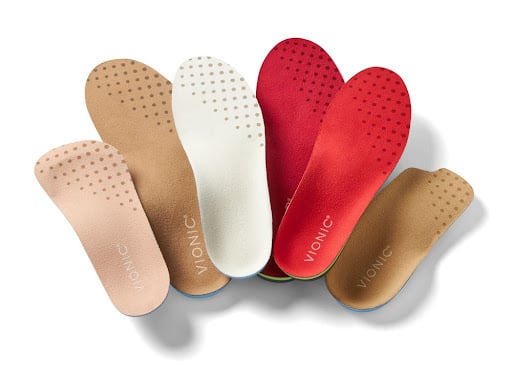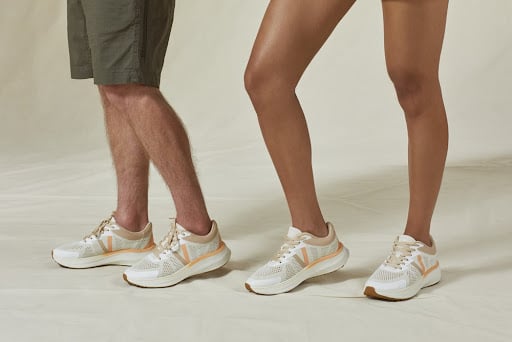
There’s nothing worse than sore feet. And it can be agonizing to be up and about all day without any sense of relief as you go about your daily tasks. As such, it’s essential to take preventative measures to avoid foot pain, whether you lead an active lifestyle or are simply in search of day-to-day comfort.
The good news is there are two helpful ways to protect your feet: orthotics and orthopedics.
If the names sound similar, it’s because they are! Both contain the Greek root ‘ortho,’ meaning ‘correct,’ and are designed to do just that—correct common foot problems. There are some key differences, though, and each offers unique benefits you won’t want to miss out on. Read on to find out more and learn how to choose the right option for you.
What Are Orthotics?
If your dogs are constantly barking, it may be time to invest in a good pair of orthotics. If you find yourself asking “what is orthotics?”, you’ve already taken a step in the right direction.
Orthotics are shoe insoles designed to provide relief from improper foot mechanics. They come in soft and rigid varieties, with a wide range of materials.
So, Are Orthotics Just an Insert?
You may be familiar with an over-the-counter shoe insert, typically available in the foot care aisle of your local pharmacy. They’re often referred to as arch supports. Like orthotics, they’re a removable insole intended to make a shoe more comfortable.
The relationship between orthotics and general inserts is akin to a square and rectangle. All orthotics are inserts, but not all inserts are orthotics.
The most basic difference is orthotics are typically designed to correct a pre-existing medical foot condition, while inserts are not. Inserts improve the comfort level of a shoe with materials like gel and foam. However, they don’t function to address issues that can cause abnormalities in the feet.
Orthotics are generally more expensive than an over-the-counter shoe insert, as they are more specialized and available for customization.
Benefits of Orthotics
Perhaps the most immediate benefit of orthotics is comfort. When your feet can’t work the way they’re supposed to, it doesn’t feel good, and orthotics can usually compensate for any performance issues.
Orthotics can help with conditions such as:
- Plantar fasciitis
- Diabetes
- Arthritis
- Overpronation
- Temporary injury
Orthotics are also a preventative measure. By correcting your movement today, you can save lots of trouble down the road. In more serious instances, proper usage can even prevent the need for future surgeries or other costly medical treatment.1

How to Find The Best Orthotics
With all the benefits available, it’s hard to make a case against securing a pair of orthotics. Here are some of our tips for picking out the right ones.
- Size matters – Studies have shown up to 72% of people wear the wrong shoe size.2 It’s no wonder foot pain is so common! Before looking at orthotics, make sure you’re wearing the right shoe size in the first place to maximize their effectiveness.
- Assess your needs – It’s important to understand your individual foot needs before purchasing a pair of orthotics. For example, if you’re suffering from plantar fasciitis, orthotics with extra heel support might benefit your feet the most. Not all orthotics are the same, and some are better suited to specific conditions.
- Match to your shoes – Imagine picking out a great pair of orthotics only to bring them home and realize they don’t fit inside the shoes you wear the most. Avoid this inconvenience by double-checking the measurements and trying them on with your favorite pair of shoes, if possible.
- When in doubt, look elsewhere – We can all relate to buying something we were on the fence about, only to let it go to waste in the back of our closet. Pay close attention to the fit when trying on orthotics. If it’s not an enthusiastic yes, it’s a no. When used correctly, orthotics should be worn daily, so comfort should be non-negotiable.
What Are Orthopedics?
So what are orthopedic shoes? Like orthotics, orthopedics are shoes that have been designed to correct any abnormal foot problem, whether from a medical condition or structural differences in the bones or muscle tissue. When comparing orthotics vs orthopedic shoes, it’s important to note orthotics are removable additions, while orthopedics are all-in-one inserts that comprise a whole shoe.
Orthopedics has somewhat of a stigma surrounding them and can be pigeonholed as only necessary for the elderly. This couldn’t be further from the truth—people of all ages can benefit from their use.
Benefits of Orthopedics
Similar to orthotics, orthopedics elevate the comfort factor of a shoe. If you work in a profession that requires you to stand for long periods of time, orthopedics are a sure-fire way to keep your feet feeling their best.
Here are just a few impressive items on the resume for orthopedics:
- Reducing pain and swelling of feet
- Reducing pain in other parts of the body, such as the back and knees
- Preventing foot deformity
- Increasing joint stability
- Supporting overall health of your feet
Like orthotics, one of the biggest benefits of orthopedics is the capacity to prevent further issues in the future. As far as the conditions they serve, the list is nearly identical to that of foot orthotics.
Find The Best Orthopedics
With the amount of orthopedics available on the market, it can be tricky to determine which is right for you. While there’s no blanket answer for everyone, there are a few ways to vet a potential purchase for effectiveness.
Here are some features to keep an eye out for when choosing a pair of orthopedics:
- Wide toe box – Making sure your feet have enough room in a shoe is essential for preventing foot pain. Narrow shoes with a pointed toe, like high heels, can uncomfortably squeeze your feet and restrict blood flow to the area. If your feet are hurting, you’re likely better off with a wide shoe.
- Lots of padding – From the heel to the collar and tongue of the shoe, padding usually increases the comfort of your footwear enormously. Padding also absorbs shock and can help relieve knee pain.
- Removable insole – While the insole that comes with an ideal orthopedic shoe should be high quality, it’s always a good idea to leave yourself with the option to upgrade later. Combining the right orthopedic with the right orthotic can be a match made in heaven!
- Easy fastening mechanics – Orthopedic shoes are a popular choice among those with arthritis. For this reason, orthopedics commonly come with velcro straps instead of laces to make putting them on easier. If you are afflicted by arthritis, this might be a helpful attribute to look for.
Which Is Right For Me?
After outlining the key differences between orthotics and orthopedics, you probably have a clearer picture of what they can do for you. To recap, foot orthotics are removable insoles, while orthopedics are shoes.
As the two have similar functions and thus produce similar benefits, it can be tricky deciding which to seek out. The short answer? You can’t really go wrong with either.
A few things to consider might be:
- Price – As orthopedics are an entire shoe rather than just one part, they’re often more expensive. If you opt for a customizable version of either, you’re going to have to shell out even more. However, there’s a chance this cost can be recouped with savings on future medical bills from treatment. For those on a budget, orthotics might be the choice for you.
- Ease – Orthotics take more time and effort to implement, as you need to ensure they match the shoes you already have on hand. Conversely, orthopedics are ready to go the second you take them out of the box, and won’t require any transferring between shoes. If you’re on the low-effort end of the spectrum, orthopedics can suit a low-maintenance routine.
- Aesthetic – Since custom orthotics can be inserted into any shoe, you won’t have to trade in your favorite kicks for something entirely different. This can be a deal-cincher for someone like a server, where specific shoes can be a part of a uniform. A drawback to orthopedics is the inability to change the color or style since they come as-is. If you like the look of orthopedics, you’ve got yourself a two-birds-one-stone deal.
Find Your Perfect Fit With Vionic
Now that you’ve mastered the orthopedic vs orthotic conundrum, you should be able to tell a little more about which (or both!) might be right for you. The benefits of orthotics and orthopedics are vast, and when used regularly, they can severely reduce pain and inflammation. At Vionic, we offer a diverse selection of women’s insoles and men’s insoles, combining the benefits of both approaches. Thanks to these handy tools, you can take your life back from chronic pain.
Looking for comfortable shoes that provide excellent support without sacrificing style? At Vionic we believe you can have it all. Check out our comfortable shoes for men and women alike. Our priority has always been providing the best support possible. So give us a try, and feel the difference for yourself.
Sources:
- The National Center for Biotechnology Information. Incorrectly fitted footwear, foot pain and foot disorders: a systematic search and narrative review of the literature. https://www.ncbi.nlm.nih.gov/pmc/articles/PMC6064070/
- Healthline. Orthotics: Are They the Answer to Your Foot, Leg, or Back Pain?. https://www.healthline.com/health/bone-health/orthotics#treatment



Leave a Reply